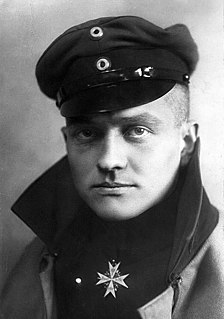Related Research Articles

The following are lists of World War I flying aces. Historically, a flying ace was defined as a military aviator credited with shooting down five or more enemy aircraft during aerial combat. The term was first used by French newspapers, describing Adolphe Pégoud as l'as, after he downed seven German aircraft.
Captain Carleton Main Clement was a Canadian First World War flying ace officially credited with 14 victories despite being handicapped by flying an obsolete plane.
Thomas Rose was a British flying ace in World War I, credited with 11 victories. Better known as "Tommy" Rose, he also won the King's Cup Air Race in 1935 and from 1939 to 1945 was Chief Test Pilot with Phillips & Powis Aircraft Ltd. – renamed Miles Aircraft Ltd. in 1943.
Captain D'Urban Victor Armstrong DFC was a World War I flying ace credited with five aerial victories.
Wing Commander Allan Runciman Brown was an Australian World War I flying ace credited with five aerial victories. During World War II, he was a Wing Commander for the Royal Australian Air Force.
Lieutenant Ernest Lindup was a South African World War I flying ace credited with five aerial victories.
Lieutenant Harold Arthur Sydney Molyneux was a World War I flying ace credited with five aerial victories. During World War II, he returned to service in the Royal Canadian Air Force.

Lieutenant Hilbert Leigh Bair began his service career as a World War I flying ace credited with six aerial victories.
Lieutenant George Edgar Bruce Lawson was a South African World War I flying ace credited with six aerial victories.
Lieutenant Robert William McKenzie was an Australian World War I flying ace credited with six aerial victories.
Lieutenant Cecil Robert Thompson was a South African World War I flying ace credited with six aerial victories.
Lieutenant Earl Frederick Crabb was a World War I flying ace credited with six aerial victories. After World War I, he was an aviation pioneer and bush pilot. He returned to military aviation during World War II. He flew as a commercial pilot until he was 72 years old.
Lieutenant Gavin Lynedoch Graham DFC, LdH, CdG was a South African World War I flying ace credited with thirteen confirmed aerial victories.

During World War I, the national air services involved developed their own methods of assessing and assigning credit for aerial victories.
Lieutenant William Myron MacDonald was an American-born Canadian flying ace. He was credited with eight confirmed victories during World War I while flying as a wingman to Victoria Cross winner William George Barker.

Lieutenant Frederick Ernest Luff was an American flying ace during World War I. He was credited with five aerial victories, and awarded the British Distinguished Flying Cross.
References
Above the Trenches: a Complete Record of the Fighter Aces and Units of the British Empire Air Forces 1915–1920. Christopher F. Shores, Norman L. R. Franks, Russell Guest. Grub Street, 1990. ISBN 0-948817-19-4, ISBN 978-0-948817-19-9.